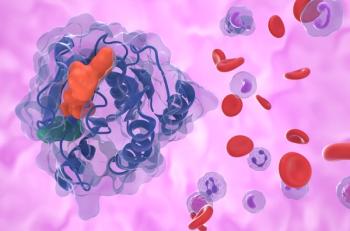
Researchers in China Develop Tool to Detect Hidden Lung Damage in RA Patients
Rheumatoid arthritis (RA) is a chronic autoimmune disorder best known for damaging joints, but in nearly a third of patients, it can also scar the lungs. This lung complication is known as RA-associated interstitial lung disease and usually develops quietly and is diagnosed only after irreversible damage has occurred. The Pulmonary Fibrosis Foundation says that the cause of RA-associated interstitial lung diseases is uncertain but notes that risk factors include smoking and certain genetic mutations. A foundation factsheet mentions a theory that inflammation of the lungs might trigger RA in some people, in which case the condition might begin in the lungs in some people and then spread to the joints.
Early detection is considered one of the greatest unmet needs in the field. To solve that, a group of researchers from Xi’an Fifth Hospital in Shaanxi, China, have developed a machine learning tool that helps detect hidden lung damage in patients with RA, offering a potential way to catch complications before they become life-threatening.
Their research, published in
Using a cohort of 149 RA patients between 2020 and 2023, where each participant underwent a high-resolution CT scan to determine whether they had ILD, blood samples were collected to measure a wide range of clinical and molecular markers. These included standard inflammatory signals and a set of specialized biomarkers previously linked to lung damage, such as KL-6, interleukin-6 and CYFRA21-1.
The team then tested four types of machine learning models to see whether they could integrate this data to predict lung involvement. The strongest performer was an algorithm known as XGBoost, which achieved nearly 90% accuracy in distinguishing between patients with and without ILD.
“The model showed balanced sensitivity and specificity, meaning it was unlikely to generate excessive false alarms while still catching true cases,” wrote corresponding author Yunqi Bao and colleagues.
Among the dozens of variables tested, KL-6 emerged as the most powerful predictor. Patients with ILD had KL-6 levels nearly three times higher than those without lung involvement.
Notably, the researchers found that KL-6 elevation did not track with common measures of systemic inflammation such as C-reactive protein, suggesting it reflects lung changes specifically rather than overall rheumatoid disease activity.
Although age, smoking history and disease duration added to the model’s predictive power, none outweighed the influence of the biomarker panel. According to the authors, combining biological and clinical features in this way may help identify patients who should undergo closer monitoring or targeted imaging, while sparing others from unnecessary radiation exposure from repeated CT scans.
The researchers noted that the tool is not intended to replace CT scans but rather to serve as a gatekeeper for who should receive them. They envision a future clinic in which a routine blood draw analyzed by an AI model produces a risk score that guides doctors to order a scan for the right patients at the right time.
Still, despite promising results, the authors admitted that further testing is required. After all, the research was cross-sectional, capturing a snapshot rather than tracking disease development over time, and it did not include lung function testing to link biomarkers with breathing capacity.
Despite these limitations, the findings offer a hopeful glimpse of how AI and molecular medicine might combine to improve care for people with RA.
Newsletter
Get the latest industry news, event updates, and more from Managed healthcare Executive.




















































